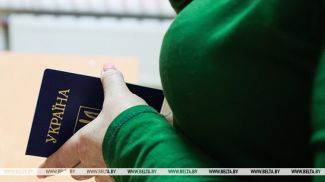SAN FRANCISCO, 2 December (BelTA - Xinhua) - Human brain takes less than a second to tell between reality and fantasy, a new study indicated.
The study, by researchers at the University of California, Berkeley, reveals a visual mechanism they call "ensemble lifelikeness perception," which determines how humans perceive groups of objects and people in real and virtual or artificial worlds.
"This unique visual mechanism allows us to perceive what's really alive and what's simulated in just 250 milliseconds," said Allison Yamanashi Leib, a postdoctoral scholar in psychology at UC Berkeley, and lead author of a paper published in the journal Nature Communications. "It also guides us to determine the overall level of activity in a scene."
For the study, the researchers conducted 12 separate experiments on 68 healthy adults with normal vision.
In the majority of trials, the participants viewed up to a dozen images of random people, animals and objects, including an ice cream sundae, a guinea pig wearing a shirt, a hockey player, a statue of a wooly mammoth, a toy car carrying toy passengers, a caterpillar and more.
Participants quickly viewed groups of images, then rated them on a scale of 1 to 10 according to their average lifelikeness. They accurately assessed the average lifelikeness of the groups, even those displayed for less than 250 milliseconds.
And in another experiment, the researchers flashed images, then showed them ones that participants had seen as well as ones they had not.
The results indicated that while participants had forgotten a lot of details, their "ensemble perception" of what had been lifelike remained sharp.
"This suggests that the visual system favors abstract global impressions such as lifelikeness at the expense of the fine details," study senior author David Whitney, a UC Berkeley psychology professor, was quoted as saying by a news release from the school. "We perceive the forest, and how alive it is, but not the trees."
Vision scientists have long assumed that humans need to carefully consider multiple details before they can judge if a person or object is lifelike.
However, "our study shows that participants made animacy decisions without conscious deliberation, and that they agreed on what was lifelike and what was not," said Whitney.
"It is surprising that, even without talking about it or deliberating about it together, we immediately share in our impressions of lifelikeness."











